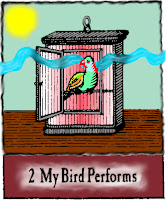Moreover, like Soylent Green, the true focus of Koyaanisqatsi is what is usually the background: the background has become the foreground. The collapsed infrastructure, the streets in which people live in abandoned cars (an index of overpopulation), the oppressive heat caused by the so-called "greenhouse effect," the environmental catastrophe that eventually explains the terrible secret behind "soylent green," all point to the film's actual subject, ideological failure. In addition, both films address oppressive social conditions by means of a process that Slavoj Žižek calls the paradox of anamorphosis:
Although Koyaanisqatsi was first released on the film festival circuit in 1982, like Soylent Green it is a Seventies film. Soylent Green was filmed the late fall of 1972 and released in May 1973. Koyaanisqatsi was created 1975-80, with virtually all of the footage shot for the film (excluding the found footage) done in the 1970s. Although both films depict the consequences of industrialization, arguably the event linking the films is the demolition of the Pruitt-Igoe housing complex, the destruction of which (pictured above) forms a key montage sequence in Koyaanisqatsi (one of the movements in Philip Glass's music is named Pruitt-Igoe). Pruitt-Igoe was a federal housing project built in St. Louis in the mid-50s intended for poor and low-income families, consisting of roughly 2,800 apartments in 33 eleven-story buildings. By the late 1960s, the crime and squalor associated with Pruitt-Igoe had become a national embarrassment, and the project was closed. In early 1972—only 16 years after construction was finished—the federal government began to demolish the complex, a process eventually completed by 1976. Pruitt-Igoe has lived on, symbolically, as an emblem of failure. It has been immortalized in documentary films and in fiction (J. G. Ballard's High Rise, 1975). Both Koyaanisqatsi and Soylent Green were made in the years following the ideological failure represented by Pruitt-Igoe. Moreover, both films employed technical advisors from the world of academia actively engaged in addressing social problems: Frank R. Bowerman (Soylent Green) and Langdon Winner (Koyaanisqatsi).
Žižek uses as an illustration of anamorphosis Holbein's famous painting The Ambassadors: if looked at straight on, there is a noticeable "stain" or blur in the lower center of the painting, but when looked at from from the proper lateral standpoint, that is, from an anamorphic perspective, the blur reveals itself to be a skull. In Koyaanisqatsi, the background becomes the foreground, allowing us to approach reality anamorphically. The time-lapse photography used in Koyaanisqatsi, for instance, in which an endless stream of automobiles is transformed into a stream of light, is an example of anamorphosis, allowing us to see contemporary life not in its actual form, but as it really is.
Of course, unlike Soylent Green, Koyaanisqatsi also draws on several cinematic traditions, some of them dating to the cinema’s origins in the late nineteenth century: its use of the phantom ride, for instance, and its use of photogénie. Nonetheless, while I haven't yet decided on the validity of the association, I was struck by how similar the viewer of Koyaanisqatsi is to Sol Roth during his assisted suicide, as he watches spectacular film clips of an Edenic Earth while listening to light classical music.













